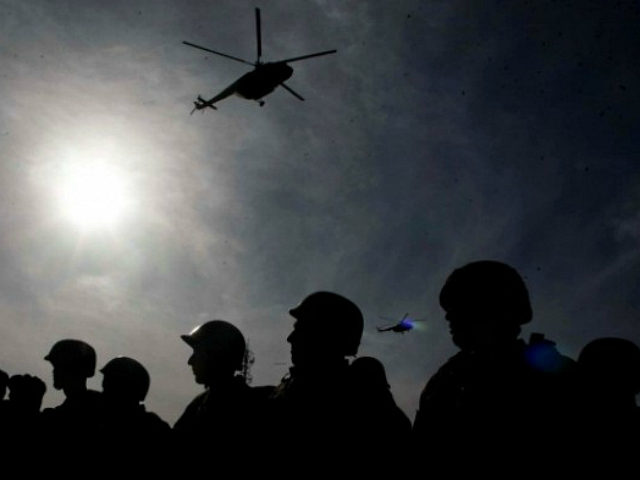The strength of the Afghan security forces stands at its “lowest level” in years, a U.S. watchdog agency revealed Thursday.
John Sopko, the chief of the U.S. Special Inspector General for Afghanistan Reconstruction (SIGAR), made the revelation early Thursday in the latest quarterly report (April 1 to June 30) to Congress.
SIGAR’s assessment came as the United States is preparing to reduce its military footprint in Afghanistan as part of a potential peace deal with the Taliban.
According to SIGAR, the strength of the Afghan forces plummeted after the implementation of a new system to combat the use of “ghost” soldiers by corrupt local officials.
The Afghan National Defense and Security Forces (ANDSF) includes military and police units.
Citing the U.S. military-led Combined Security Transition Command-Afghanistan (CSTC-A), SIGAR found:
[A]s of May 25, 2019, there were 180,869 ANA [Afghan National Army] and Afghan Air Force (AAF) and 91,596 ANP [Afghan National Police] personnel, for a total of 272,465 ANDSF personnel enrolled and accounted for. … These figures reflect 9,554 fewer ANA and 24,788 fewer ANP than the assigned strength numbers reported to SIGAR last quarter.
For the fourth consecutive quarter, ANDSF strength is reported at the lowest level it has been since the [U.S.-NATO Resolute Support train, assist, and advice] mission began in January 2015. … This quarter’s ANDSF strength decreased by 41,777 personnel since approximately the same period in 2018, and by 50,277 compared to about the same period in 2017.
U.S.-led foreign forces are charged with developing the ANDSF as part of the CSTC-A.
SIGAR acknowledged that the “CSTC-A continues to offer the caveat that they are unable to validate ANDSF strength data for accuracy.”
The U.S. government alone has devoted more than $80 billion to develop the Afghan security forces since the Afghan war began nearly 18 years ago. Nevertheless, the ANDSF continues to struggle in its fight against the Taliban and the other jihadi groups that call Afghanistan home.
Some Afghan corrupt leaders have long exploited the U.S.-funded salaries of the ANDSF by inflating the number of troops with so-called “ghost,” or nonexistent, soldiers to receive more money.
At one point, the U.S. government did not know how many Afghan security forces existed.
To fix the problem, the U.S. government required the use of biometrics through the Afghan Personnel and Pay System (APPS) to validate ANDSF enrollment.
The Afghan forces now report their “assigned (actual) personnel strength as the number of personnel enrolled … rather than the number reported on-hand by ANDSF components,” SIGAR reported.
As a result, the strength of the Afghan security forces has dropped by tens of thousands.
SIGAR explained:
This means that only those ANDSF personnel who have been biometrically validated in APPS are included in strength figures. The ANDSF strength data reported this quarter thus reflect significant differences from previously reported strength data.
When asked about the gulf between last quarter’s Afghan-reported strength numbers and this quarter’s APPS validated ones, [the U.S.-led transition command] said that it “does not expect that the APPS reported data will ever equal the amount that was self-reported [by the ANDSF]” and that it “cannot categorize the excess individuals as “ghost” personnel, because it is not known why the Afghan reported numbers are higher.”
In a different report, SIGAR noted that the transition command admitted that biometric validation “will not completely eliminate the problem of ghost soldiers.”
SIGAR continues to investigate the “ghost” personnel issue despite the changes to the system.
The ANDSF assigned strength stands “at 77.4% (79,535 personnel short) of its authorized strength” of 352,000 personnel, “a nearly 10 percentage-point decline from last quarter,” SIGAR noted in its new report.
SIGAR’s released its latest assessment days after the U.S. announced it is preparing to reduce the number of American forces in Afghanistan by the next presidential election in 2020.
The U.S. troops reduction is part of ongoing peace discussions with the Taliban. Negotiators expect to finalize an agreement later this year that involves the withdrawal of foreign forces in exchange for Taliban assurances that Afghanistan will no longer harbor international terrorists al-Qaeda and the Islamic State (ISIS/ISIL).

COMMENTS
Please let us know if you're having issues with commenting.